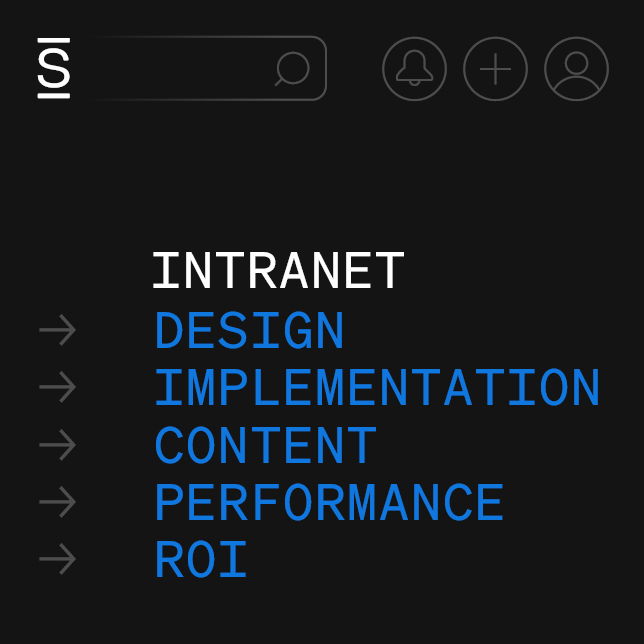There’s pressure on them to achieve particular targets, and managing a team can be very challenging.
A social intranet can support the needs of your managers, helping them with everyday activities and making their role just that little bit easier. Here are just some of the ways in which your intranet can help the managers in your organization.
1. Access to learning
Usually managers are required to undertake training, covering softer skills such as leadership but also processes like completing appraisals. Some required training might be available via a learning management system (LMS).
An intranet can provide a more user-friendly and attractive path to reaching the right learning content than an LMS. It can also give more context to the courses that managers need to complete. By giving information about the different options, detailing learning paths and linking to specific courses, learning can be positioned as something managers want to do rather than have to do.
Beyond training courses, far more is actually learned informally and through on-the-job experiences. Social intranets support this aspect of managers’ learning through communities, knowledge sharing and access to curated external sources.
2. Connection with a peer community
A core feature of social intranets is the creation of community spaces, which allow employees with common interests or purposes to come together and share insights, experiences, links and documents. Making a community space for your managers is a great way to help them share best practices, new learnings, discuss issues, ask each other questions and share resources.
Sometimes the process of managing can be lonely and stressful, so it’s important for managers to know they have an opportunity to connect with peers who are in the same situation as they are.
3. Interaction with employees
The social intranet is a perfect place for managers to communicate with employees in a way that is far more ‘natural’ than more formal methods of communication. This is especially relevant for senior managers with large teams under them.
Social tools also allow employees to respond to managers’ messages through comments, allowing managers to gauge team opinion on different matters. This supports a less hierarchical and more consultative and open approach to management, which is ultimately more engaging for team members.
4. Cascading communications
A key role for managers is to cascade top-down messages and communications to their direct reports. The intranet can successfully support this process by being a key point for distributing resources for managers and the place for ‘official’ communications.
Managers can also get useful background information, which may be important in the context of communicating with employees, for example accessing up-to-date information on company strategy. The intranet is where employees can be referred if they want more official information or resources.
5. Managing the team
Managing a team can be challenging and busy, especially when it comes to HR-related processes. These can be complex, such as the annual performance review, or simple like approving an employee’s request for annual leave.
Intranets help managers keep on top of these processes and relevant tasks through:
- Using online forms and workflows to approve employee requests
- Linking to, displaying data from or integrating with key HR and learning systems
- Facilitating dashboards and reporting to help individuals manage their teams
6. Staying with the process
An intranet helps managers ensure they are in step with key organizational processes and procedures, following the right steps, completing the right forms and adhering to the right policies.
An intranet may have a central place where all the latest up-to-date policy documents and forms are kept. Managers should be confident they can find these key assets quickly. This avoids mistakes and ensures managers are managing correctly.
7. Quick access to key information
Many modern intranets can target content to particular groups. If so, you should be able to add relevant news and links targeted to the specific needs of the managers. Adding quick links to relevant resources and systems and keeping managers informed of the latest updates can help managers in their day-to-day activities.
Intranets help managers manage!
A social intranet also helps managers in the same way it does other employees, doing everything from allowing them to collaborate with colleagues around the globe to accessing the staff restaurant menu.
Social intranets also helps managers with their specific needs. If your managers don’t love your intranet, then consider providing some of the capabilities detailed in this post. They’ll soon be converted to intranet champions!





